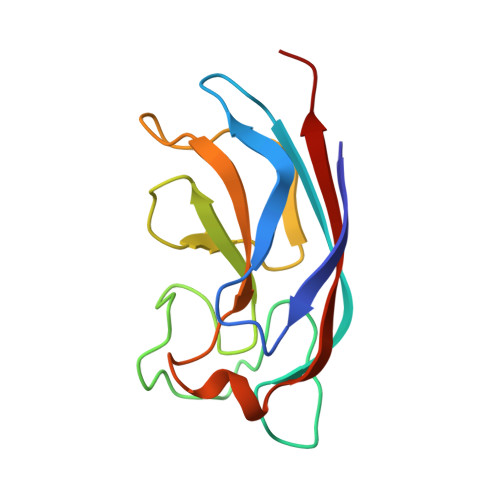Targeting the Central Pocket of the Pseudomonas aeruginosa Lectin LecA.
Siebs, E., Shanina, E., Kuhaudomlarp, S., da Silva Figueiredo Celestino Gomes, P., Fortin, C., Seeberger, P.H., Rognan, D., Rademacher, C., Imberty, A., Titz, A.(2022) Chembiochem 23: e202100563-e202100563
- PubMed: 34788491
- DOI: https://doi.org/10.1002/cbic.202100563
- Primary Citation of Related Structures:
7FIO - PubMed Abstract:
Pseudomonas aeruginosa is an opportunistic ESKAPE pathogen that produces two lectins, LecA and LecB, as part of its large arsenal of virulence factors. Both carbohydrate-binding proteins are central to the initial and later persistent infection processes, i. e. bacterial adhesion and biofilm formation. The biofilm matrix is a major resistance determinant and protects the bacteria against external threats such as the host immune system or antibiotic treatment. Therefore, the development of drugs against the P. aeruginosa biofilm is of particular interest to restore efficacy of antimicrobials. Carbohydrate-based inhibitors for LecA and LecB were previously shown to efficiently reduce biofilm formations. Here, we report a new approach for inhibiting LecA with synthetic molecules bridging the established carbohydrate-binding site and a central cavity located between two LecA protomers of the lectin tetramer. Inspired by in silico design, we synthesized various galactosidic LecA inhibitors with aromatic moieties targeting this central pocket. These compounds reached low micromolar affinities, validated in different biophysical assays. Finally, X-ray diffraction analysis revealed the interactions of this compound class with LecA. This new mode of action paves the way to a novel route towards inhibition of P. aeruginosa biofilms.
- Chemical Biology of Carbohydrates (CBCH), Helmholtz-Institute for Pharmaceutical Research Saarland (HIPS), Helmholtz Centre for Infection Research, 66123, Saarbrücken, Germany.
Organizational Affiliation:



















